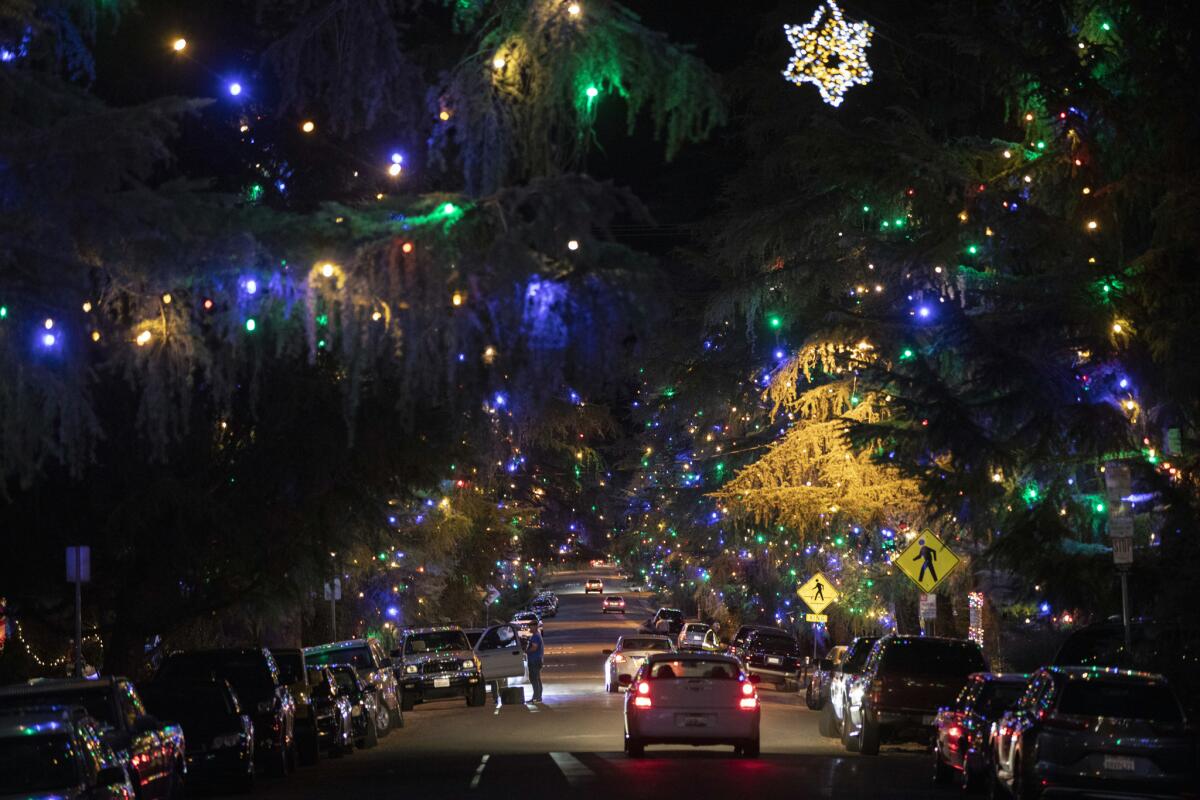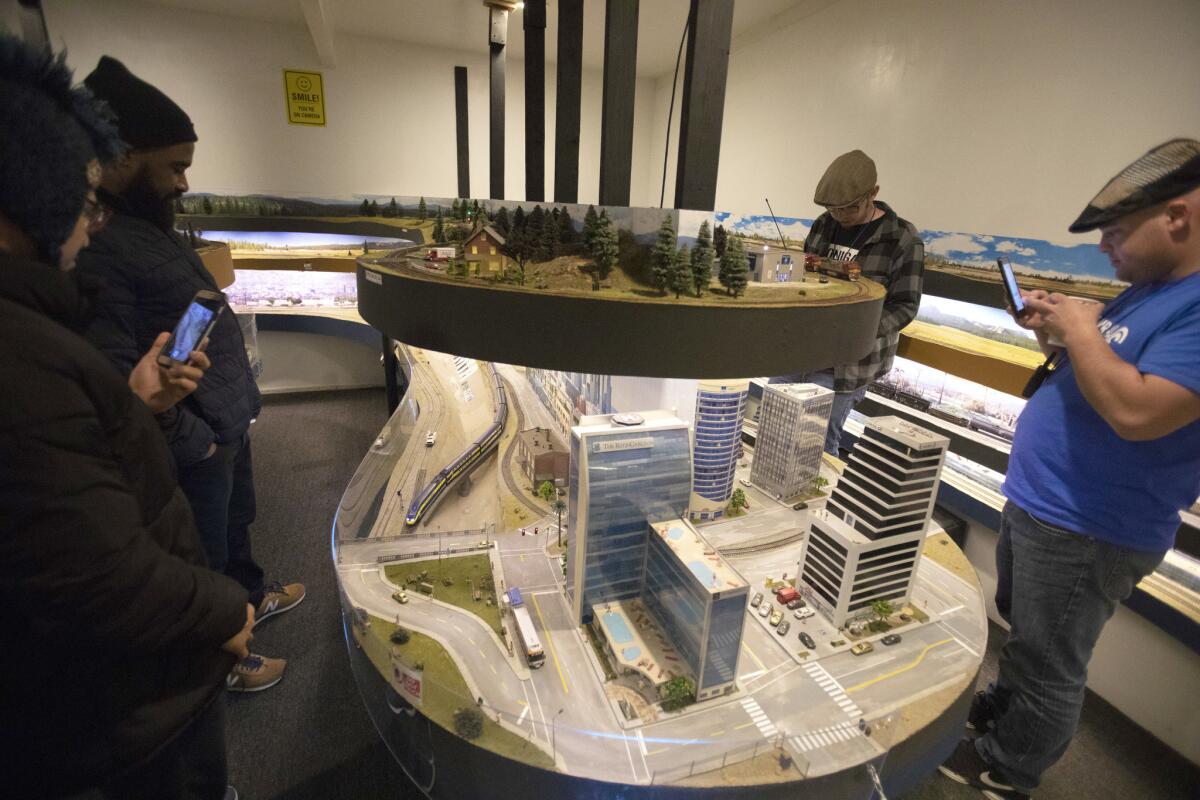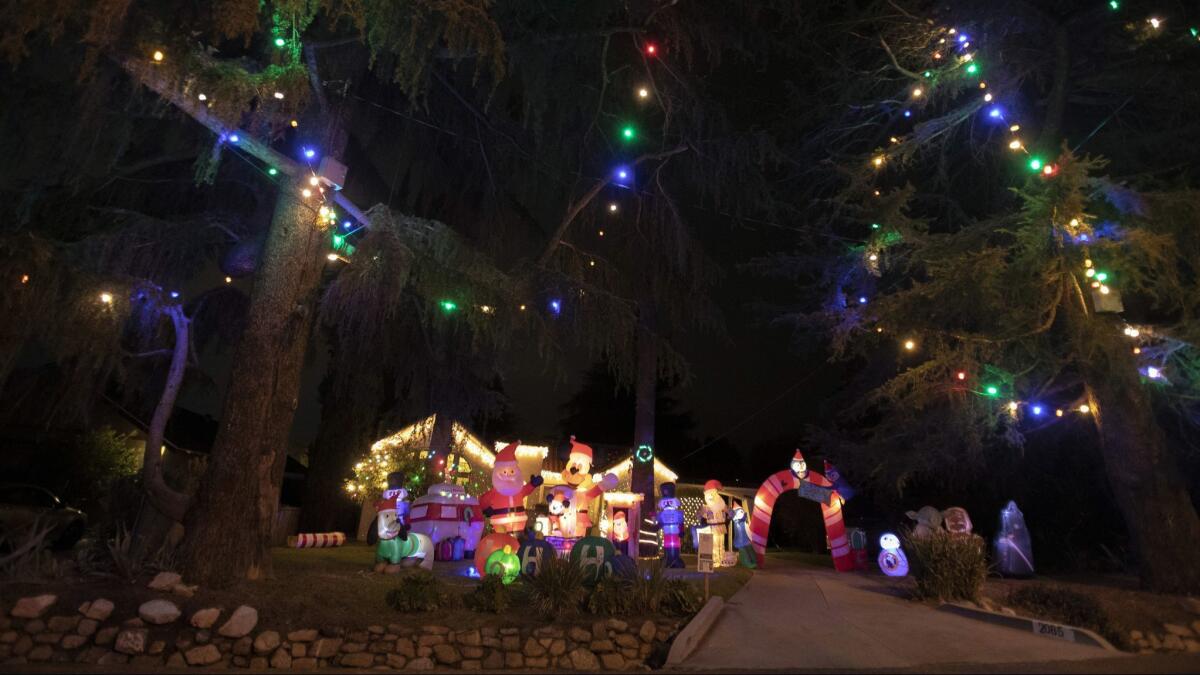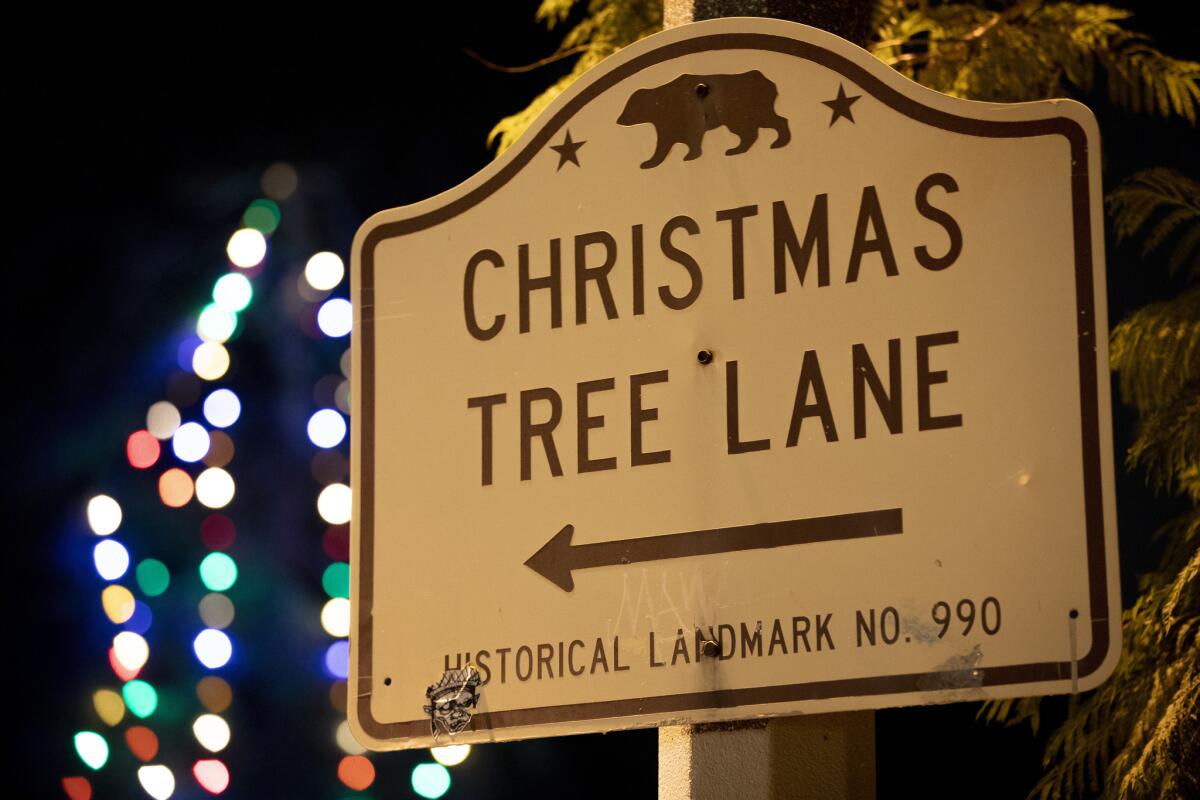Altadena’s Christmas Tree Lane evokes an old-fashioned holiday

In an era of mega holiday displays — holographic Santas, animatronic penguins, snowflake laser lights — Altadena’s Christmas Tree Lane can strike some as a December dud.
One Yelp reviewer reported that her son was “near tears with disappointment” after they drove the lane — a near century old tradition that drapes colored lights over 136 towering deodar cedars lining nine blocks of Santa Rosa Avenue.
Woodland Hills’ Candy Cane Lane, she wrote, was “a million times better” — eight blocks of homeowners’ yard displays glutted with glow.
But in a darkening world that each December yearns for light, Christmas Tree Lane may be the right tonic. For 98 years it’s been powered by neighbors who’ve volunteered countless hours to keep the lane going despite sparse funds.
Billed as the world’s oldest and largest outdoor Christmas display, the lane is a California Historical Landmark and is listed on the National Register of Historic Places.
The trees are set aglow during a ceremony traditionally held the second Saturday in December. The event includes a choir, carolers, a jazz band, the Pledge of Allegiance, the national anthem, local politicians — and a drum squad that parades down Santa Rosa.
Certain nights, there’s even a house on the lane tricked out with model trains that’s open to the public. The trains power around 35 scale miles of track laid out in a homeowner’s garage, backyard and interior rooms. Layouts include an early-1900s theme, the West Coast including downtown L.A. and Disneyland, and Santa atop a locomotive.

The event is Americana at its best, “a nice little hometown gathering,” said Tony Ward, vice president of the Christmas Tree Lane Assn. formed in 1957. Ward, who lives on the lane, has been a volunteer since 1991.
In early September, scores of neighbors and area students begin draping lines of lights over the trees, planted in 1885 by Altadena founder John Woodbury. It’s a formidable two-month process — 14,000 bulbs are tested and hundreds replaced. Light strings are tied to ropes looped through pulleys that are placed in trees up to 60 feet high. The strings are hauled up tree by tree, block by block.
“We build the lines by hand using heavy gauge wire — you don’t just go down to Target to buy these things,” explained Steve Bailey, 69, a former volunteer for 15 years who lives on the lane.
Back in 1920, the lane was a big deal. The confluence of two novelties –– electric light and the automobile — made for an unrivaled experience. Department store owner Frederick C. Nash organized the first lighting in 1920 to attract shoppers; electric cables were laid along the street’s field stone gutters.
About 50,000 autos drove the lane each season by the late 1920s, an estimate that holds today and is likely surpassed. Postcards of the enchanted sight lent the lane an “only in California” cachet along with worldwide fame.

“It was spectacular,” said Ward, who first visited at age 12 in 1957.
Ward painted a picture of his family packed in a red 1956 Buick station wagon, the brisk air thick with smoke from wood blazes set by Boy Scouts keeping warm as they directed traffic –– amid “kids dangling their feet off the ends of tailgates,” he said.
Back then the wonder seemed, well, more wondrous: Tree boughs hung lower and were interlaced, forming a starry tunnel, he said.
In the 1970s, Santa roared down the lane astride his motorcycle to kick things off. In the 1980s, a single family largely kept the lane lighted, and the 1990s brought an ambitious board, which erased a budget deficit and launched the lighting ceremony.
In 1964, Southern California Edison and a labor union installed a permanent electrical grid and threw in free power — until 2000 when electricity costs spiked after utilities deregulation. By then the grid was deemed unsafe.
The county saved the doomed lane by installing a new system, with the lane association shouldering annual electric costs of about $2,400. In recent years that’s fallen to $450 as LED bulbs have been wholly incorporated at a steep cost.
“It’s still a battle for funds,” said Ward, 74. Membership dues, donations and sponsorships fund the group’s $12,000 to $17,000 annual budget.
The tight band of Altadeneans has braved other challenges: The trees have been pummeled by drought, root fungus and fierce winds. In 2016, county experts estimated that 26 trees were dying; the community’s emergency measures saved all but two.
Of course, Christmas Tree Lane is nothing without those majestic trees — one-third to one-half are 133-year-old originals from the 1885 planting. It’s true what that dismayed Yelp reviewer wrote: There’s “nothing there to look at on the street other than trees.”
But in an age of inflatable Santas, maybe that’s enough.

Christmas Tree Lane
When: 6 p.m. to midnight until Jan. 2. Trees are lighted again on Jan. 6 and 7 during the Feast of the Epiphany.
Where: The lane travels along Santa Rosa Avenue between East Altadena Drive and Woodbury Road. There are no sidewalks along the lane; for safety, walkers should wear bright clothing and carry flashlights.
Info: dev.christmastreelane.net
Model train house: 2085 Santa Rosa Ave., Altadena. Open 6 to 10 p.m.Dec. 15, 16, 22, 25 and 29


